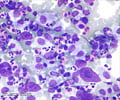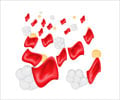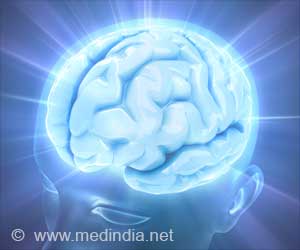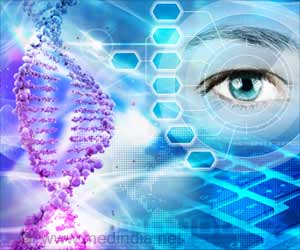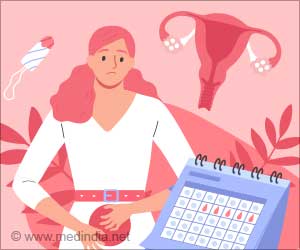Learn all about stem cells and cord blood banking from Jeevan’s Dr. Saranya Narayan. An interview on the subject.
Stem Cell is the current mantra to cure all kind of conditions that have never seen the light of an effective cure. The stem cell excitement caught the medical world’s imagination ever since a child with Fanconi’s Anemia, was successfully treated with a cord blood transplant in France in 1988. Today its research is still in its infancy and claims of cure are tall and many claims are only anecdotal, but undoubtedly the immense potential of these godly magical cells to treat a host of diseases and disorders have left the scientific world wonderstruck. Promising results from ongoing research in regenerative medicine has prompted stem cell banking in all parts of the world. Much of promise for cure is at present only anticipatory, hence the consumers should be wary of any claims of cure unless these are published in peer reviewed journals.
Medindia spoke to Dr. Saranya Narayan MD, Medical Director, Jeevan Blood and Stem Cell Bank and Research Center, Chennai, India, to learn more about stem cell banking in general and cord blood banking in particular.For our readers’ benefit, could you explain the basic concept of stem cell therapy?
Stem cells are master cells that can be used to replace dysfunctional, diseased or dead tissues in the body. When injected into the body, stem cells have the unique capacity to multiply indefinitely, change into several of the 200 or more types of cells in the human body and adapt themselves to the environment. Injecting stem cells also activates certain chemical pathways and directs the production of trophic or growth factors, anti-apoptotic, angiogenic and anti-inflammatory factors. For example if the patient has a myocardial infarction otherwise called a heart attack, where a part of the heart muscle is dead, injecting stem cells through various routes has shown to help grow fresh blood vessels into the previously dead tissue and, improve the capacity of the heart muscle to contract, thereby helping the heart to regain some of its lost function.
Cord blood is increasingly being preferred to bone marrow as a stem cell source because these cells are young, healthy, afford greater pliability and are “immunologically naïve” i.e. they have not been exposed to diseases and have no “immunological memory”. Collecting cord blood is completely painless compared to retrieving adult stem cells from bone marrow that causes some lingering discomfort for a few days, and requires the use of an anesthetic. Several unrelated and related donor cord blood transplants done world over have proved the efficacy of cord blood transplantation, even when there were incomplete human leukocyte antigen (HLA) matching between donor and recipient.
There is a lot of media hype regarding stem cell treatment. Can you separate fact from fancy and tell us how much of what is promised is actually possible?
Research is uncovering immense potential for the use of stem cells in various treatments. Cord blood stem cells (hematopoietic stem cells) have been successfully used to treat several life-threatening diseases especially blood disorders such as thalassemia and blood and immune system related diseases. In India, stem cells have been used to treat blood related disorders such as Thalassemias, and acute and chronic leukemias mainly, apart from inherited red cell and platelet abnormalities and inherited immune system disorders.
What exactly is stem cell banking?
The separation of stem cells from blood and storing it at minus 196 degrees C for future use is stem cell banking. Stem cells can be collected from the bone marrow, the peripheral blood and the cord blood mainly.
What is meant by cord blood? Could you elaborate on the types of cord blood banking?
The blood left over in the placenta and the umbilical cord after the baby is born that is usually discarded as biological waste is called cord blood. The cord blood contains stem cells that are vital for treating hematopoietic and genetic disorders. Stem cell banks collect between 50 - 150 ml of cord blood from the umbilical cord after it has been clamped. Screening of the blood is done for Hepatitis B, C, HIV, Malaria and Syphilis among others, and Human Leukocyte Antigen (HLA) typing is done to determine the newborn baby’s HLA type. The cord blood is then cryogenically frozen for future use to treat children and adults suffering mainly from blood cancers and blood disorders. Collection of umbilical cord blood does not harm the baby or the mother and until the mid 1980s this blood was thrown away. It is only after this that researchers realized the vast untapped resource of stem cells in cord blood and decided to start banking the cord blood.
There are two forms of banking – Public and Private or Family banking.
Public Banking is when the family donates their baby’s cord blood to the bank either for future treatment for someone or for research. The bank takes care of the entire cost of collection, testing and storage of cord blood. The units are available for treatment to anyone across the globe.
Family banking is when the family saves their baby’s cord blood in a bank. The costs of collection, testing and storage are borne by the family. The stored stem cells belong to the family and the family can retrieve it at a later date at no further cost.
Jeevan Stem Cell Bank’s chief focus is on Public banking while we do offer Family banking in certain situations at specific insistence and request of the family or their clinicians especially if there is a family member who suffers from a disease treatable with stem cells.
Jeevan Blood Bank works with clinicians and hematologists to collect and store cord blood. The objectives of Jeevan Stem cell bank include:
• Raising public awareness about stem cell transplants, the need for cord blood donation and the necessity for a public stem cell bank in India
• Supplying HLA matched Umbilical Cord derived stem cells to patients in India either free of cost for the poor, or on an actual cost recovery from those who can afford and at the prescribed fee from NRIs
• Offering cord blood units to advance medical research
• Linking Jeevan Stem Cell Blood Bank with the international network of marrow donor and cord blood registries
Where is stem cell banking facility available in India?
All the four major metropolitan cities in India viz. Delhi, Mumbai, Calcutta and Chennai have private stem cell banks with collection centers in several locations all over the country. Jeevan Stem Cell Bank is India’s first public cord blood bank in the not-for-profit-sector. Our processing facility is in Chennai, while we do have our facilitators in several states.
It is generally believed that stem cell therapy is meant only to facilitate treatment of the rich. Could you explain the approximate cost factor for stem cell treatment?
We must bear in mind that stem cells are offered as a treatment option to only a few judiciously selected patients based on their clinical condition. Stem cells do cost a lot as the charge needs to cover the costs of collection, testing and finally cryo-freezing the stem cells for protracted periods of time.
The National Marrow Donor Program (NMDP) in the United States makes a unit of cord blood available for a price of US $47, 000 (2.1 crore rupees) including shipping costs. StemCyte charges around US $ 12,500 (56 lakh rupees).
In addition, hospital charges in India for about two months to enable stem cell treatment and post transplant care would cost roughly 20 lakh rupees. The cost of similar treatment in Singapore would be approximately 1.4 crore rupees . In view of the high cost involved, treatment is not an easily affordable option even if required.
We hope to supply HLA matched stem cells free of cost to those below the poverty line, and on a cost recovery basis for those who can afford it. We have already had stem cell matching requests, from France, Australia and Bahrain and while we have not had perfectly matched stem cells to release, it has reinforced the fact that there are several people all over the world who need stem cells. This challenges and motivates us to collect more cord blood samples.
Four million human embryos are lying unused in cold storage world over. Do you foresee something like that happening with bone marrow and cord blood stem cells stored in surplus?
That is unlikely to happen as stem cells have immense potential. Apart from the vast therapeutic potential, researchers and the pharmaceutical industry particularly have tremendous use for these stem cells. Organ creation and transplantation, banking for gene therapy, drug development and toxicity studies , studying neoplasms in vitro…..there are a whole gamut of possibilities for which these stored stem cells can be used.
Currently in developing countries like India the demand outstrips the availability of stem cells. Lack of suitable HLA matched donors when the patient doesn’t have a sibling donor, is a major limitation for stem cell transplants in our country.
HLA proteins are highly diverse and vary between different races. There is a greater likelihood of finding a match within the same ethnic population group and hence it is essential that every country has its own database and bank of stem cell donors. Only a miniscule 4% of cord blood that is stored is collected from Asians, and hence perhaps 1 in every 20 - 25 Asians looking for a perfect match is lucky. Compared to this, every alternate Caucasian (Europeans, Americans) is likely to find a match.
We have a heavy disease burden in India where 3-8% of the population have thalassemia with 8000-10,000 more thalassemics and a similar number of newly identified patients with leukemia are added each year. We need to raise public awareness on cord blood transplant as a potentially life saving treatment option for thousands of patients who depend on repeated blood transfusions for treatment of these illnesses.
Many gynecologists in India are unsure about cord blood and its potential use in future. What could be the reason for their lukewarm response?
There is always initial resistance to anything new and this is still a relatively new field for India. In addition there have been various questions raised by academic bodies on the marketing techniques employed by private banking companies the world over. These are possibly the reasons why several obstetricians are treading cautiously.
What are the medico-legal implications of the use of stem cells? This being an upcoming field especially in India, has the government of India drafted guidelines for the same? What kind of regulatory mechanisms are available to protect the people from unnecessary claims by many stem cell organizations especially in private hospitals?
We do have guidelines laid down by the Indian Council of Medical Research (ICMR). These have not yet been enforced. When the stem cells come from the person’s own blood or marrow as in autologous stem cell transplant (from self to self) there are few legalities involved. If the stem cell transplant is from another person, there are a few permissions that need to be obtained as shown in the figure. Most importantly, the mode of treatment and the risks involved should be clearly explained to the patient in a language understood by the patient and the patient should be allowed to make an informed decision and give his/her consent only after this.

IC-SCRT – Institutional committee – Stem cell research and therapy
IEC – Institutional Ethics committee
DCGI - Drug Controller General India
For further details log on to: http://www.icmr.nic.in/stem_cell/stem_cell_guidelines.pdf
What is your dream that inspires you to propel Jeevan Stem Cell Bank on a fast track?
Fast track? Not so sure about that. Dreams – or rather hopes - certainly!
Initially the project was to set up a public cord blood bank. This having been completed, the next will be to set up a registry of bone marrow and peripheral stem cell donors. We will then need to link it to the global network of marrow donor and cord blood registries. Hopefully Jeevan Stem cell Bank will one day become a facility that will offer complete transplant care under one roof- ie from finding a match till the time the person returns home well on the road to recovery!!
“Those who do most, dream most.” - Stephen B. Leacock
Medindia wishes Dr. Saranya Narayan on her quest to cross more milestones in improving the quality of lives of people—cured of diseases and disorders.
Source-Medindia
Thilaka Ravi/L



